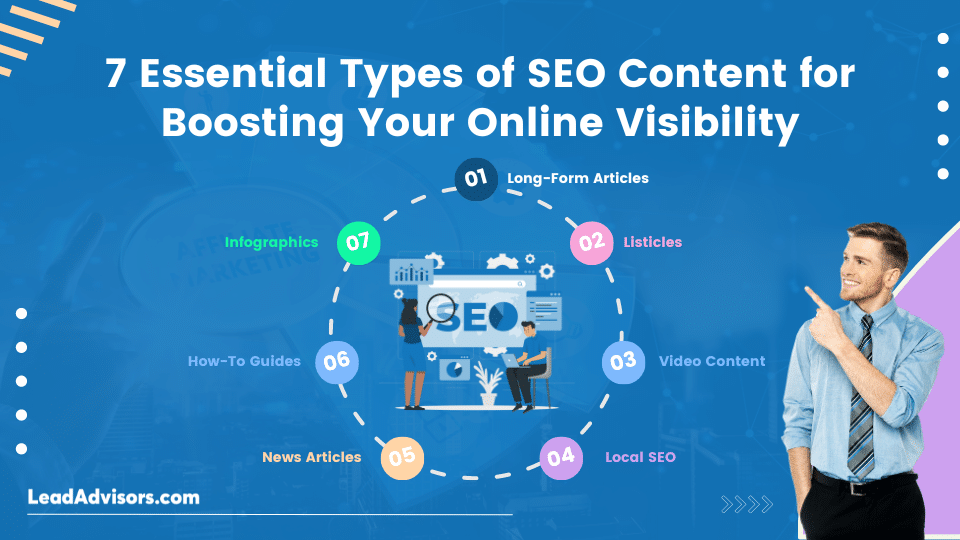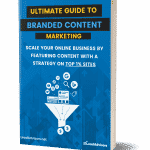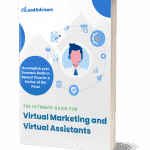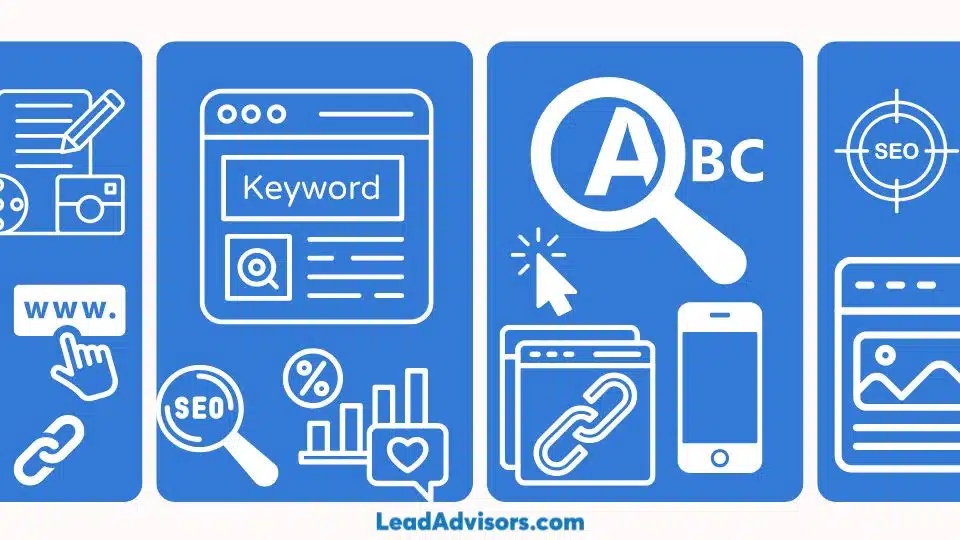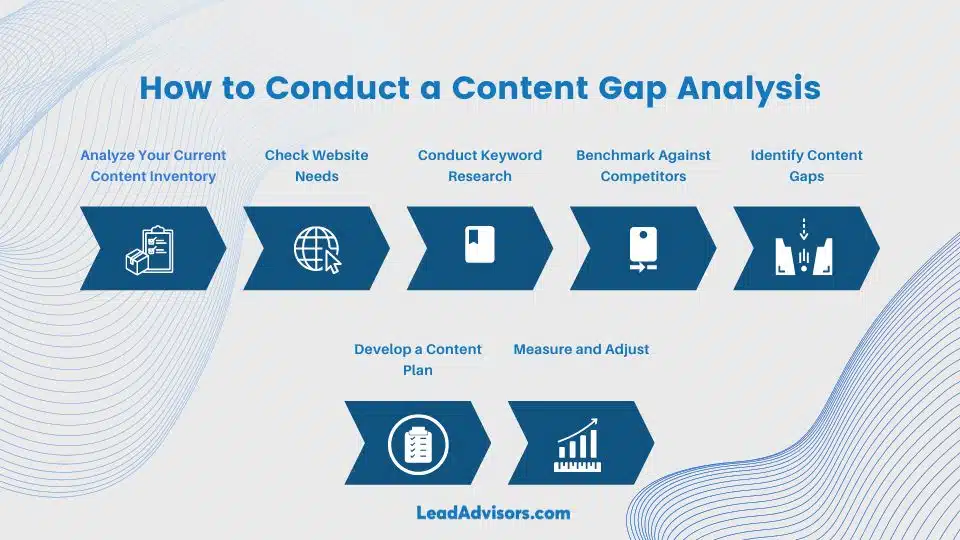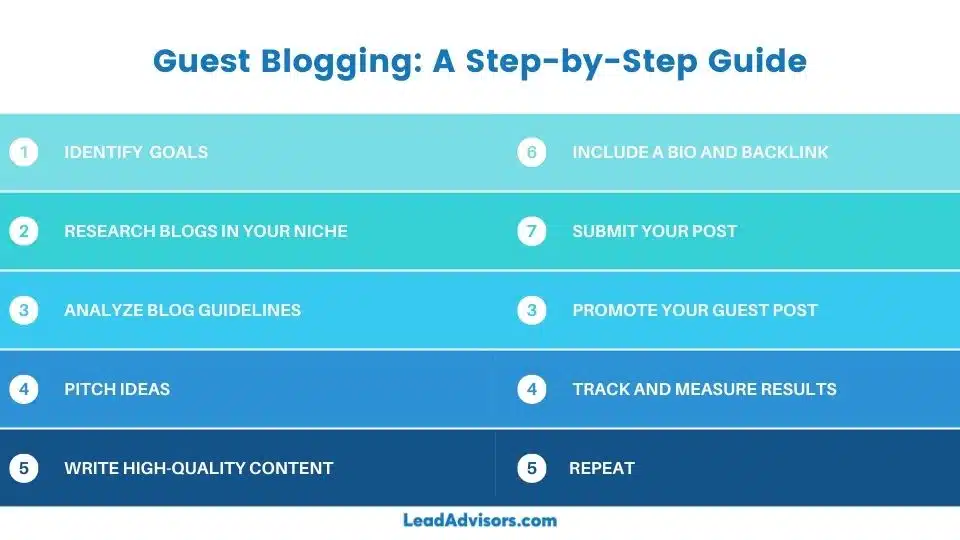Are you looking to boost your search rankings? The right SEO content can make all the difference to improve rankings everywhere. Learn about the key types of SEO content and how to craft them effectively for enhanced online visibility. From engaging blog posts to insightful infographics, discover actionable strategies within this guide to elevate your site on the SERPs.
Types of SEO Content in 2024
These seven important types of SEO content can help you streamline your business and boost your online visibility. Get more attention from your audience and eventually convert those to sales by incorporating these types into your strategy.
Long-Form Articles: In-Depth Information and Expertise
A solid type of SEO content is long-form pieces. They highlight your knowledge on a subject, as well as being deep and long-lasting for readers. When looking to optimize search engine results, these extensive bits of material are valuable tools. Viewers are engaged while the article provides lots of details in one go. Like an all-inclusive guide on-page SEO or pillar entire page, this type of SEO content is centered around one important keyword. Thus, utilizing such long-form articles is another powerful tool within any SEO strategy arsenal.
Read More: SEO Trends 2024
Listicles: Easily Digestible Type of SEO Content for Busy Readers
Time is a valuable asset in our world, and lists give readers convenient content they can take away with them. These are articles organized into lists that people may quickly skim through to identify information related to or of interest to them. A reliable type of SEO content crafting these sorts of pieces should include certain steps. One of those is to find an appropriate article per topic.
The writer must provide examples applicable to all viewers. This ensures brevity when writing descriptions while incorporating useful keywords found from prior research. If possible, when optimizing content, make it stand out from other works.
You May Also Like: Usability Testing Methods: Optimizing User Experience
Video Content: Engaging and Versatile Type of SEO Content
Because of Tikttok, IG Reels, and YouTube, video as a type of SEO content is highly in demand. Thus, setting a clear goal, understanding your audience deeply, and doing thorough keyword research are essential when optimizing video content for search engines. As far as length-long-form content is concerned, the ideal duration of videos changes. It depends on where they will be posted and what you plan to achieve with them. 30-60 seconds long works great on landing pages, while social media prefers shorter ones (under two minutes). On YouTube, longer clips can work well – around 10-15 minutes – but it’s key that viewers feel captivated by quality material. Adding transcripts helps increase user engagement while providing an added benefit for SEO content since text can also be indexed!
Read More: The Ultimate Guide to Video Advertising
Local SEO: Connecting with Local Customers
Local SEO content provides a direct path to reaching your local target audience. Its purpose is to create tailored material with local keywords, targeting what users seek in their region. Many firms have reported better results with an effective implementation of such a strategy.
On-page optimization is crucial in SEO content because keywords improve localized search engine visibility for businesses. Some additional ways include crafting state or regional landing and link building with pages filled with pertinent info. Additionally, hosting events on the webpage, adapting texts to voice searches, or providing special offers just for locals can greatly help. All these measures work together towards growing organic website traffic and improved online reputation. Overall, this can help connect companies directly with potential customers from around that area.
You May Also Like How to Improve On-Page SEO for Your Business Website
News Articles: Timely and Relevant Updates
Staying up-to-date on industry trends and events is essential for a successful SEO and content marketing strategy. To ensure the best coverage, keeping tabs on reliable sources is important. When creating news articles with this in mind, please pay attention to topics that are clear yet concise and titles that accurately summarize their contents, write from an active perspective, and provide information that’s both valuable and unique. All of which improve your article’s visibility online.
Doing keyword research can help identify the type of queries people look for when searching while also enabling you to organize them into groups based on relevance or similar themes. The goal should be two to three weekly posts, helping maintain consistency throughout your efforts to improve your digital presence through SEO content writing strategies!
Read More: Guide to Native Advertising Strategy for Business Websites
How-To Guides: Practical Solutions for Your Audience
How-to guides are a treasure trove of SEO value. This type of SEO content offer practical solutions to the challenges faced by your target audience, demonstrating your expertise and building trust. Here’s how to craft an effective how-to guide for your SEO content:
- Understand your audience
- Make steps clear and easy to follow
- Use a friendly and helpful tone
- Include examples and visuals
To create a guide that addresses the concerns of your audience, follow these steps:
- Identify your target audience.
- Discover their common challenges.
- Prioritize these challenges.
- Present information in a concise yet meaningful manner.
- Provide relevant solutions.
- Include related resources.
- Measure results and revise as needed.
For instance, if you’re creating a how-to guide on a local SEO strategy, it should clarify the basic principles and types of SEO and teach readers tactics like keyword research, website optimization, creating search engine-friendly content, building valuable backlinks, staying updated on changes in search intent algorithms and emerging trends.
This guide should also cover the importance of avoiding duplicate content, using long-tail keywords, and the role of meta descriptions in boosting SEO. It should also discuss how keeping visitors on your site longer can improve SEO, the impact of SERP features, and the potential SEO value of Instagram and other posts.
Doing so can attract more traffic, boost your SEO, and provide substantial value to your readers.
You May Also Like How to Improve On-Page SEO for Your Business Website
Infographics: Visual Storytelling for Complex Data
The primary aim of creating an infographic is to communicate complex data more understandably and appealingly while improving SEO. This requires finding the right story and relevant information that suits your target audience. When designing the infographic, there should be a clear visual hierarchy with contrast within it for better comprehension of the content presented, simplified text, and diverse design elements organized into efficient structures such as maps or charts where appropriate. Depending on what you’re trying to convey, single chart infographics may prove effective, whereas if comparing two things, a comparison format could work best; these are just some examples out of many potential options!
Read More: How to Master Technical SEO?
Creating a Solid SEO Content Strategy
SEO is the key to boosting one’s online presence. SEO content refers to writing crafted to appear higher in search engine results pages. It needs to be user-friendly and pleasing for spiders, plus have keywords that meet customers’ interests and requirements. Writing such material calls for a comprehensive strategy, which includes recognizing your target demographic, researching appropriate words, and then setting specific goals before commencing producing the actual content for SEO itself. Employing this type of written content SEO approach can get you on track rapidly toward increasing website visits from search engines like Google or Bing.
Identifying Your Target Audience
An SEO strategy focuses on targeting a particular group of mobile users that the website or local business wants to reach and engage with through their search engine optimization practices. Knowing who these people are and what they want, need, and like helps create content that has meaning for them.
Creating material tailored to our audience encourages stronger relationships between us as well as better positioning in SERPs (Search Engine Results Pages), ranking higher and within the first page of Google’s results, too.
By tuning your SEO techniques according to the preferences of your chosen demographic, you can provide something personalized yet still boost visibility more and drive traffic on search engines accordingly.
Conducting Keyword Research
When it comes to SEO, keywords are your guide. They direct you toward the kinds of content people search for online and can help boost your rankings on search engines. Doing keyword research using tools such as Moz Keyword Explorer, Google Keyword Planner, Ahrefs Keyword Explorer or Semrush, and Serpstat will uncover phrases related to what you offer online store so that when crafting content, it focuses on those terms – thus increasing the visibility of Google business profile while drawing more customers too.
Content creation should be steered by these insights from comprehensive keyword research, which equips us with meaningful information about how users locate our products and services through searches conducted over the web and mobile devices. All this knowledge, combined with keyword strategy, empowers us to increase our online presence efficiently, allowing potential audiences access to what we provide them, making targeted results much easier within reachable timeframes.
Setting Content Goals
When it comes to SEO, quality content always reigns supreme. You need engaging and goal-oriented material if you want optimal outcomes from your marketing campaigns. Achieving set goals when creating content also ensures that what you’re doing is by the bigger picture and enables tracking of results to understand the success rate associated with these actions.
For example, a target like bringing more organic website visits can be addressed by creating blog entries based on accurate keywords pertinent to your targeted group – ones that have high enough capacity to generate leads and end up right at the top when searched through search engines. Metrics related strictly to user involvement and reach obtained via such efforts are used to analyze efficacy levels both quantitatively & qualitatively. So bear this in mind when planning objectives revolving around online presence-building strategies!
You May Also Like: Call Center Training Guide 2024
Summary
In this blog post, we’ve looked into numerous types of SEO content that can bolster online visibility. To sum up, a successful SEO content strategy entails discovering your target local audience first, doing keyword research, and specifying the goals for each type of content: long-form articles, lists, and local SEO news stories. How-to guides, video material, and infographics are all necessary elements that comprise such an approach to effectively engage followers and ascend rankings on local search results and engines, ultimately driving more organic traffic toward one’s website.
Frequently Asked Questions
What are the three types of SEO?
There are three types of SEO: on-page, off-page, seo-page, and technical. On-page focuses on optimizing website content to improve its visibility in search engines, and off-page means activities outside the site, like backlinks that can help increase ranking on other websites. At the same time, technical SEO involves making technological improvements for better indexing and crawling by search bots.
What is common content in SEO?
Search engine ranking heavily relies on content, so SEO should include forms such as long-form articles and posts, evergreen pieces, and product pages with written SEO content. Ensuring that high-quality content and blog posts are utilized is a must for successful optimization efforts, as these can provide invaluable information in the form of long-form text.
What are SEO content strategies?
Organizing website content by topic to enhance SEO efforts is a great way to increase visibility in search results and promote organic traffic from search engines. By designing an effective SEO strategy, businesses can easily acquire said traffic organically on Google search results.
Search engine optimization strategies?
The SEO Starter Guide provides a foundation for search engine optimization tactics on Google Search Central. This comprehensive resource includes all the fundamental information necessary to optimize your website and improve visibility in search engines.

